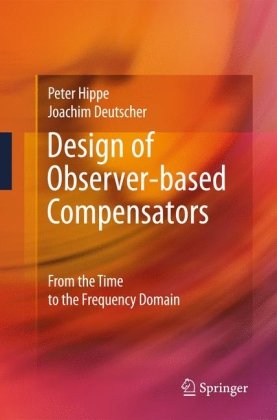

Most ebook files are in PDF format, so you can easily read them using various software such as Foxit Reader or directly on the Google Chrome browser.
Some ebook files are released by publishers in other formats such as .awz, .mobi, .epub, .fb2, etc. You may need to install specific software to read these formats on mobile/PC, such as Calibre.
Please read the tutorial at this link: https://ebookbell.com/faq
We offer FREE conversion to the popular formats you request; however, this may take some time. Therefore, right after payment, please email us, and we will try to provide the service as quickly as possible.
For some exceptional file formats or broken links (if any), please refrain from opening any disputes. Instead, email us first, and we will try to assist within a maximum of 6 hours.
EbookBell Team

0.0
0 reviewsDesign of Observer-based Compensators presents the frequency domain design of observer-based controllers in complete correspondence to well-known time domain results and gives connecting relations at every design stage. This facilitates and adds transparency to the design in the frequency domain which is not as well-established among control engineers as time-domain design. The presentation of the design procedures starts with a short review of the time domain results; therefore, the book also provides quick access to state space methods for control system design.
The frequency domain design of observer-based compensators of all orders from the full-order to the completely reduced-order compensator is covered. The design of decoupling and disturbance rejecting controllers is presented. Furthermore, solutions are given to the linear quadratic and the model matching problems. The pole assignment is facilitated by a new parametric approach which is formulated directly in the frequency domain. Anti-windup control is also investigated in the framework of the polynomial approach. Though mainly continuous-time systems are considered, the discrete-time results for disturbance rejection and linear quadratic control are also presented.
The monograph contains worked examples that can easily be reproduced by the reader, and the results are illustrated by simulations.
Design of Observer-based Compensators will be of use as a reference for control engineers, graduate students and researchers who are familiar with the time domain design and who want to become acquainted with the frequency domain design using polynomial matrices.